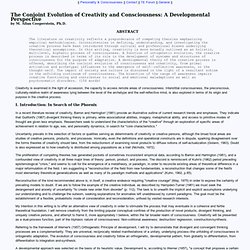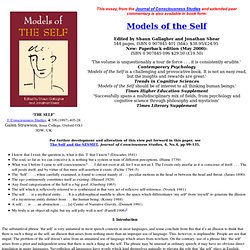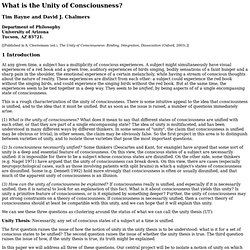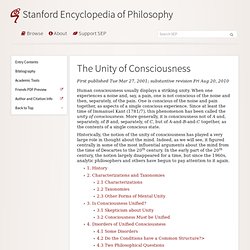

THE CONJOINT EVOLUTION OF CREATIVITY AND CONSCIOUSNESS: A DEVELOPMENTAL PERSPECTIVE by M. Allan Cooperstein, Ph.D. By M.

Allan Cooperstein, Ph.D. The literature on creativity reflects a preponderance of competing theories emphasizing empirical methodologies. Inconsistencies in defining, understanding, and investigating the creative process have been introduced through cultural and professional biases underlying theoretical assumptions. In this writing, creativity is more broadly outlined as an holistic, multilevel, biphasic process of consciousness. A function of ontogenetic evolution, the creative process is described in terms of its role in the development of systems and structures of consciousness for the purpose of adaptation. Creativity is examined in the light of accession, the capacity to access remote areas of consciousness.
I. In a recent literature review of creativity, Barron and Harrington' (1981) provide an illustrative outline of current research trends and emphases. A developmental approach was selected on the basis of its heuristic value. Galen Strawson: The Self. For further development and alteration of this view put forward in this paper, seeThe Self and the SESMET, Journal of Consciousness Studies, 6, No.4, pp 99-135, I know that I exist; the question is, what is this ‘I’ that I know?

(Descartes 1641) The soul, so far as we can conceive it, is nothing but a system or train of different perceptions. (Hume 1739) What was I before I came to self-consciousness? . . . I did not exist at all, for I was not an I. I: Introduction The substantival phrase ‘the self’ is very unnatural in most speech contexts in most languages, and some conclude from this that it’s an illusion to think that there is such a thing as the self, an illusion that arises from nothing more than an improper use of language. The first task is to get the problem into focus. II: The Problem of the Self Many people believe in the self, conceived of as a distinct thing, although they are not clear what it is. What is the Unity of Consciousness? Tim Bayne and David J.

Chalmers Department of Philosophy University of Arizona Tucson, AZ 85721. [[Published in A. Cleeremans (ed.), The Unity of Consciousness: Binding, Integration, Dissociation (Oxford, 2003).]] 1 Introduction At any given time, a subject has a multiplicity of conscious experiences. This is a rough characterization of the unity of consciousness. . (1) What is the unity of consciousness? (2) Is consciousness necessarily unified? (3) How can the unity of consciousness be explained? We can see these three questions as clustering around the status of what we can call the unity thesis (UT): Unity Thesis: Necessarily, any set of conscious states of a subject at a time is unified. The first question raises the issue of how the notion of unity in the unity thesis is to be understood: what is it for a set of conscious states to be unified? In this paper we will address all three of these questions.
The Unity of Consciousness. First published Tue Mar 27, 2001; substantive revision Fri Aug 20, 2010 Human consciousness usually displays a striking unity.

When one experiences a noise and, say, a pain, one is not conscious of the noise and then, separately, of the pain. One is conscious of the noise and pain together, as aspects of a single conscious experience. Since at least the time of Immanuel Kant (1781/7), this phenomenon has been called the unity of consciousness. More generally, it is consciousness not of A and, separately, of B and, separately, of C, but of A-and-B-and-C together, as the contents of a single conscious state. Historically, the notion of the unity of consciousness has played a very large role in thought about the mind. 1. The unity of consciousness was a main concern of most philosophers in what is often called the ‘classical modern era’ (roughly, 1600 to 1900), including Descartes, Leibniz, Kant, Hume (in a way; see below), Reid, Brentano, and James. 2. 2.1 Characterizations.